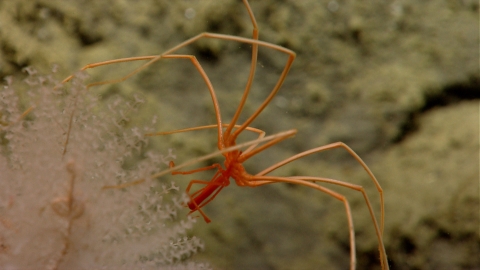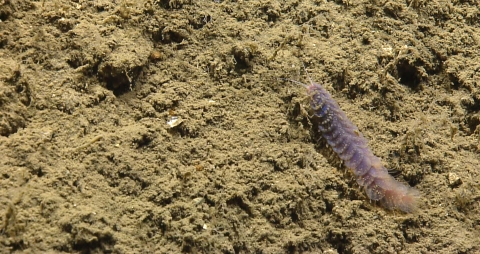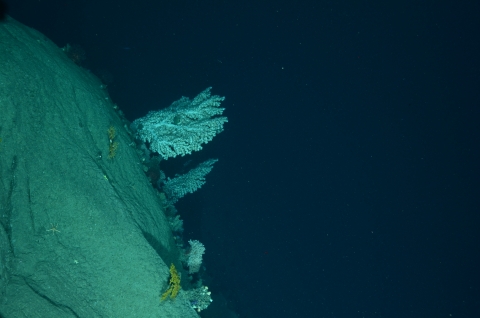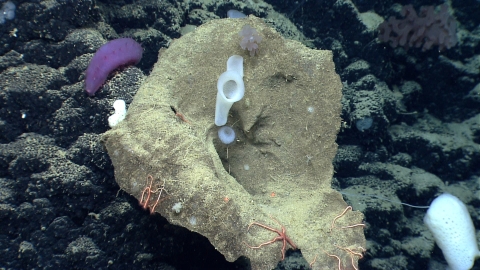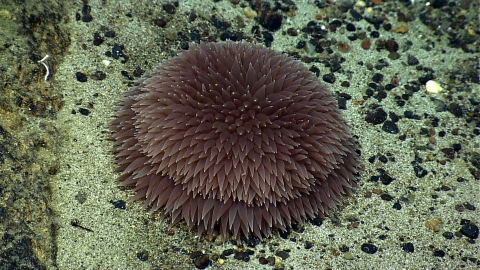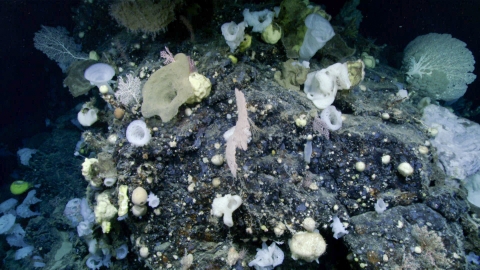Visit Us
Due to its deep-sea nature, it is not easily accessible to the general public. Don't worry, however; there are plenty of ways you can experience the wonder of the Monument!
Monument Expeditions Video Gallery
The National Oceanic and Atmospheric Administration has conducted several underwater expeditions to uncover the mysteries and wonders of the Northeast Canyons and Seamounts Marine National Monument.
Locations
Oceanographer Canyon plunges well over 3,800 meters (12,467 ft) into the deep dark ocean. That’s further than the Grand Canyon, who’s deepest part is a measly 1,829 meters (6,000 ft). Check out other amazing species like this sea spider in Dive 07: Oceanographer Canyon part of the Deep Connections 2019: Exploring Atlantic Canyons and Seamounts of the U.S. and Canada Expedition conducted by National Oceanic and Atmospheric Administration (NOAA).
Lydonia Canyon, the most eastern canyon found in the Monument, is home to unique wildlife! These creatures live in total darkness and come in all quirky shapes, sizes and colors like this scale worm! Another captivating species found here is the chimaera, which is featured in Dive 12: Lydonia Canyon from the Northeast U.S. Canyons Expedition 2013 conducted by the National Oceanic and Atmospheric Administration (NOAA).
Located between Oceanographer and Lydonia Canyons, Gilbert Canyon is a hot spot for a plethora of life including “fields” of corals, sea stars, sponges and a wide array of fishes! Deep diving beaked whales like the endangered sperm whale, Sei whale, and fin whale utilized these habitats to hunt for prey. Be sure to visit Expedition 4: Deep-Sea Coral Survey Abroad the NOAA Ship Henry B Bigelow to learn more.
Bear Seamount is an impressive feature in the Monument! It is estimated to be the oldest seamount in the Monument at approximately 100 million years old! This “monumental” seamount reaches a height of 2,499 m (8,199 ft.) off the seafloor. To compare this magnitude, Mount Washington’s peak is only at 1,917 m (6,288 ft.). Catch a glimpse at more wonder by checking out Dive 08: Bear Seamount from the Deep Connections 2019: Exploring Atlantic Canyons and Seamounts of the U.S. and Canada Expedition conducted by the National Oceanic and Atmospheric Administration (NOAA).
Mytilus Seamount is one of the deepest (over 3,000 meters at the base). Seamounts and canyons differ in many aspects, all stemming from the origins. Being a seamount, which is derived from the volcanic activity in the ocean, support different kinds of deep-sea life including different species of corals, fish, and sponges. Learn more by visiting Exploring Mytilus Seamount part of the Northeast U.S. Canyons Expedition 2013 and take a look at this interesting video focusing on a deep-sea lizard fish spotted at Mytilus Seamount.
Most seamounts like Physalia, are remnants of extinct volcanoes with hard substrate that support tons of different species. Many fascinating animals live on and near Physalia Seamount including, sea anemones, cusk eels, squat lobsters, sea stars, sponges, and the uber cool sea cucumbers. Want to see more? Visit NOAA’s highlight video Dive 11: Physalis Seamount from the Northwest Atlantic Ocean: Mid-Atlantic U.S. Canyons Expedition in 2014 conducted by the National Oceanic and Atmospheric Administration (NOAA).
Retriever Seamount is found in the lower rightmost corner of the Seamounts Unit’s “Pie Shape”. Among the many species, corals and sponges are the showstoppers! Unlike reefs, corals and sponges that live in the deep sea, grow upward creating almost an underwater “forest” with high biodiversity. Check out all the details in Dive 09: Retriever Seamount part of the Deep Connections 2019: Exploring Atlantic Canyons and Seamounts of U.S. and Canada conducted by the National Oceanic and Atmospheric Administration (NOAA).


